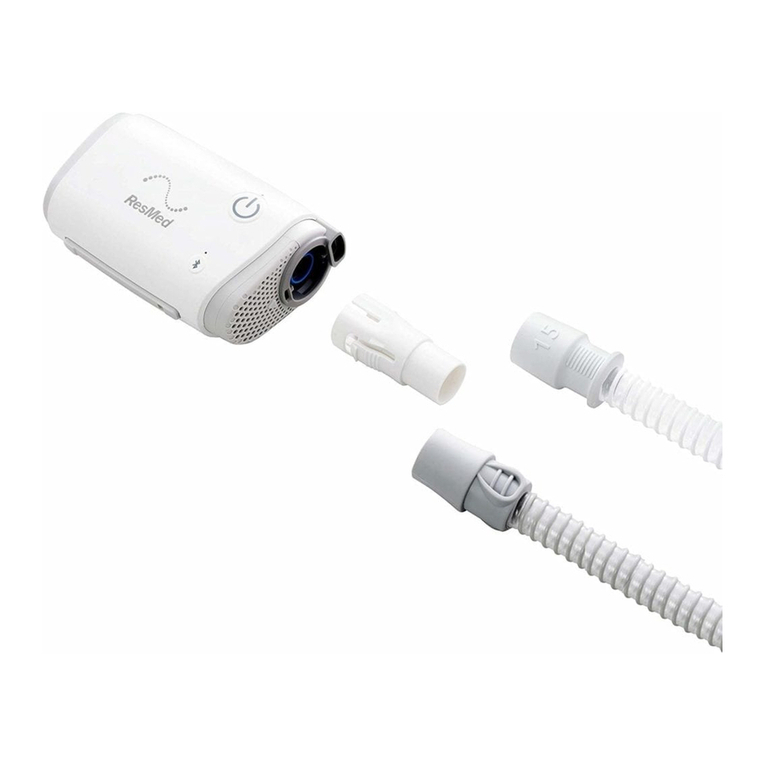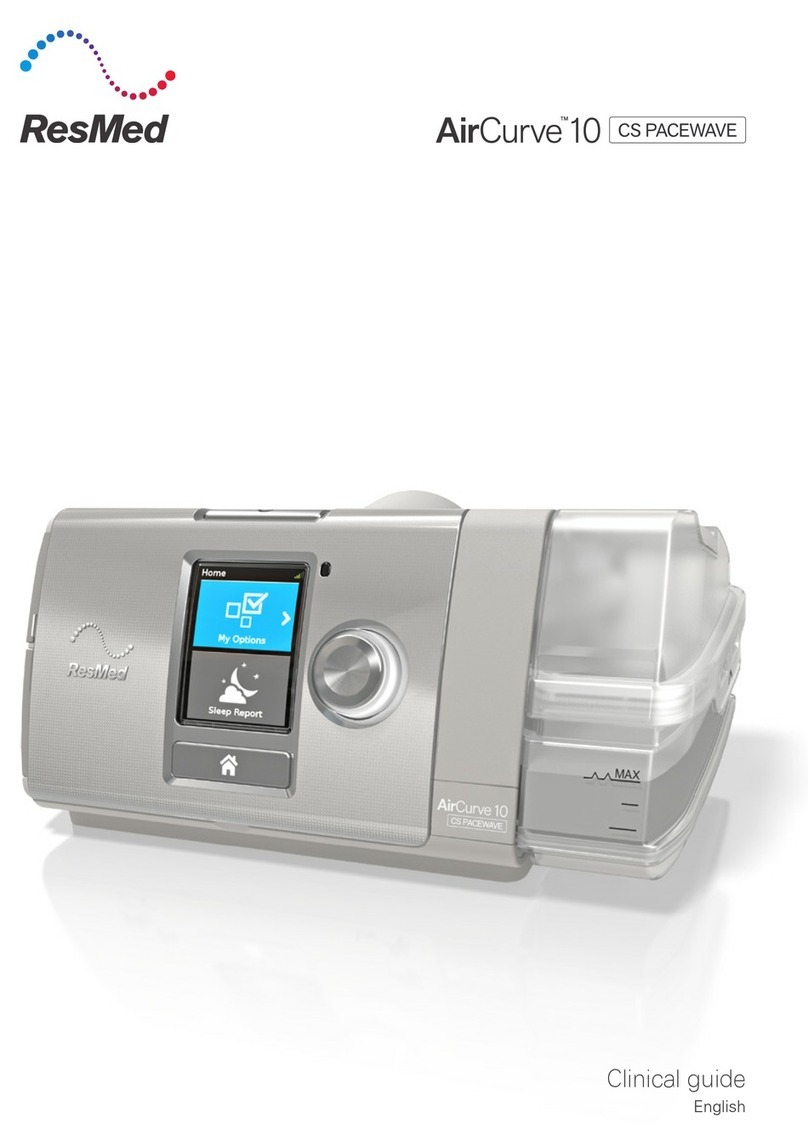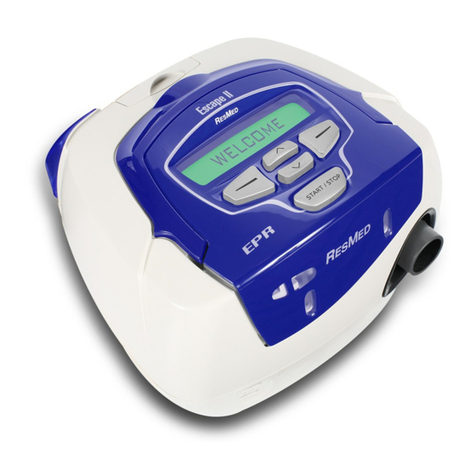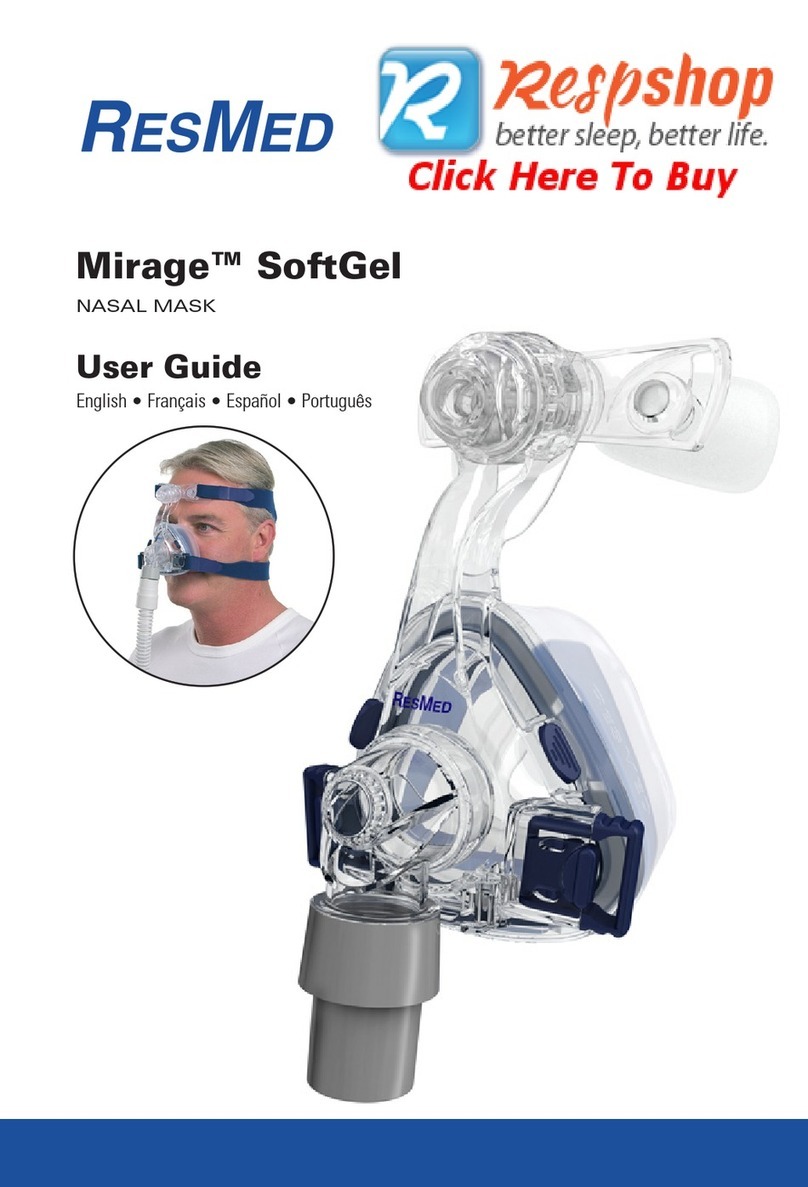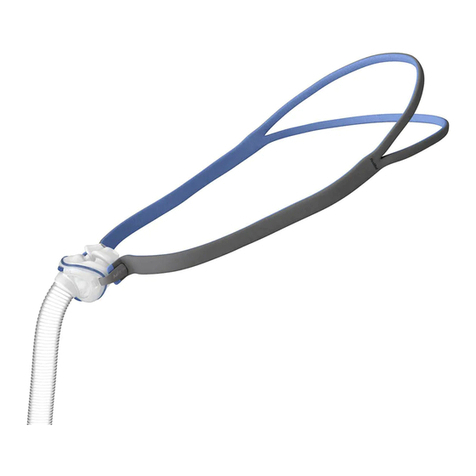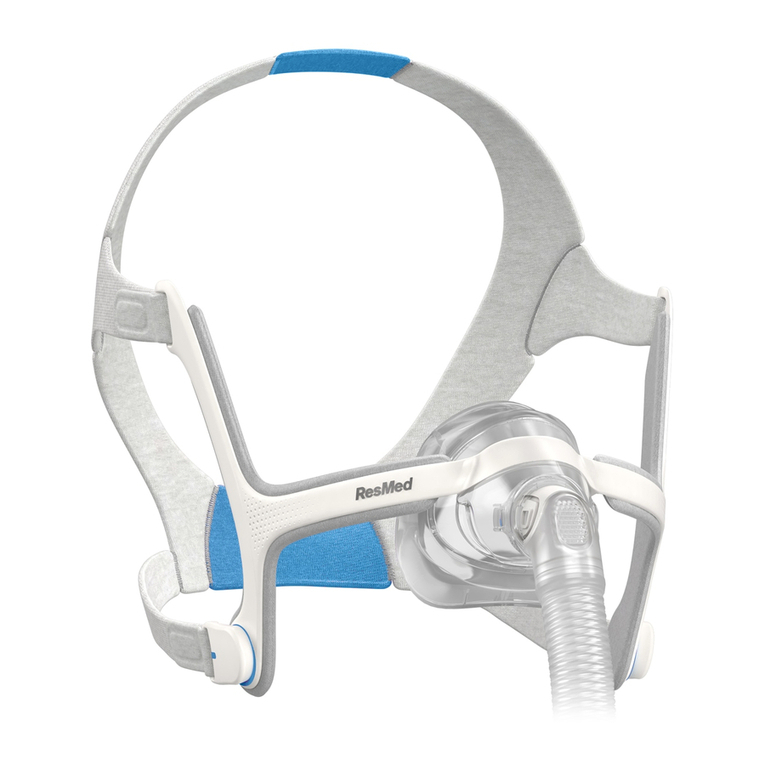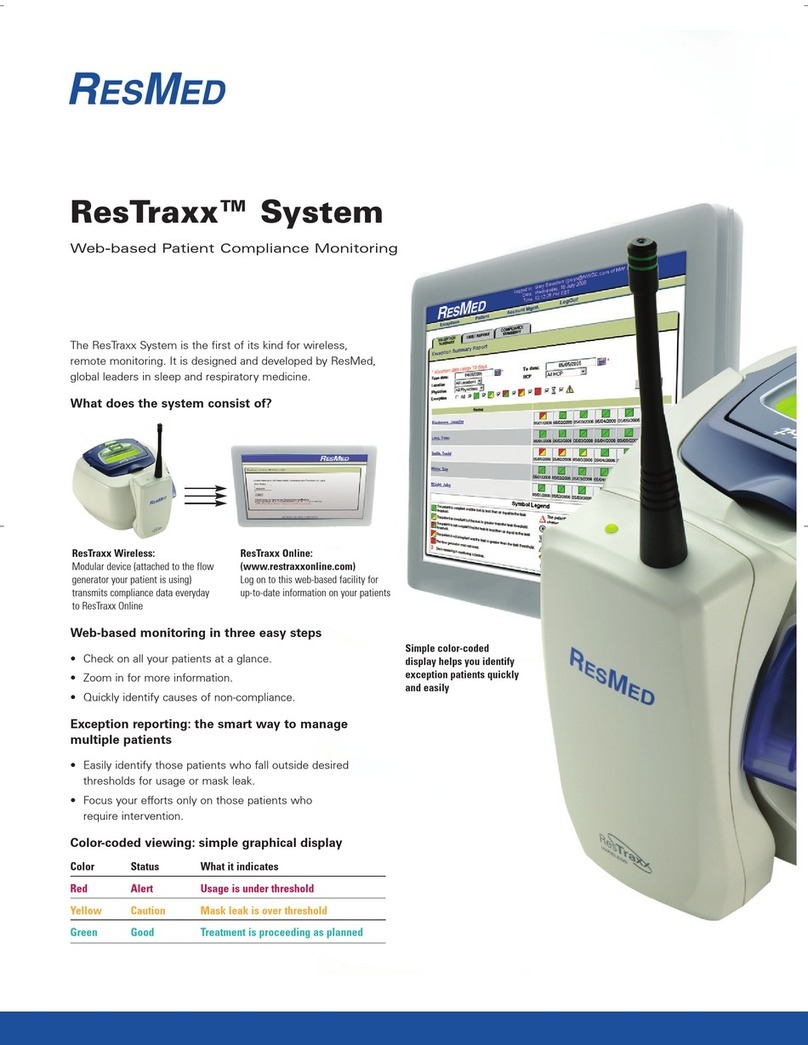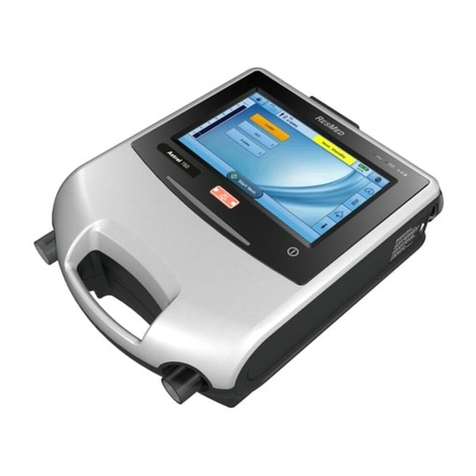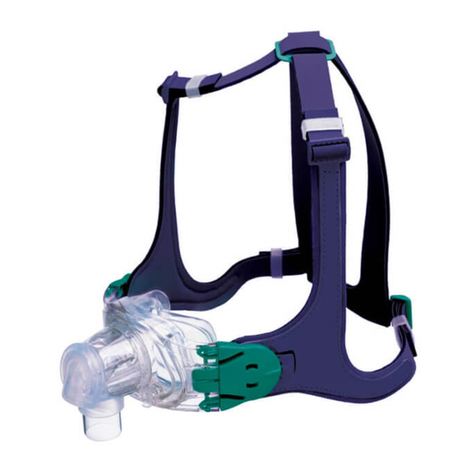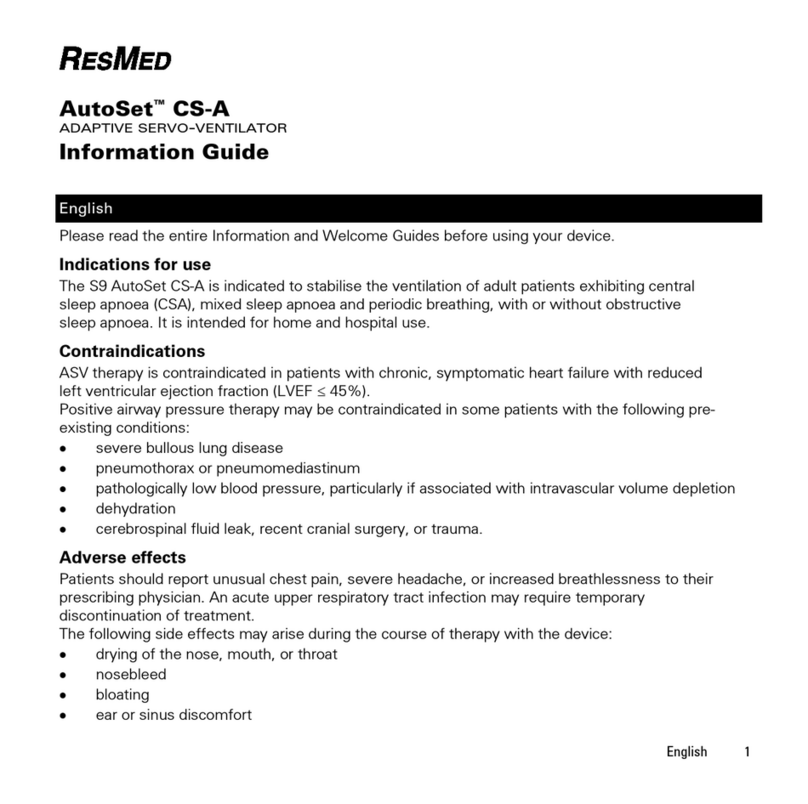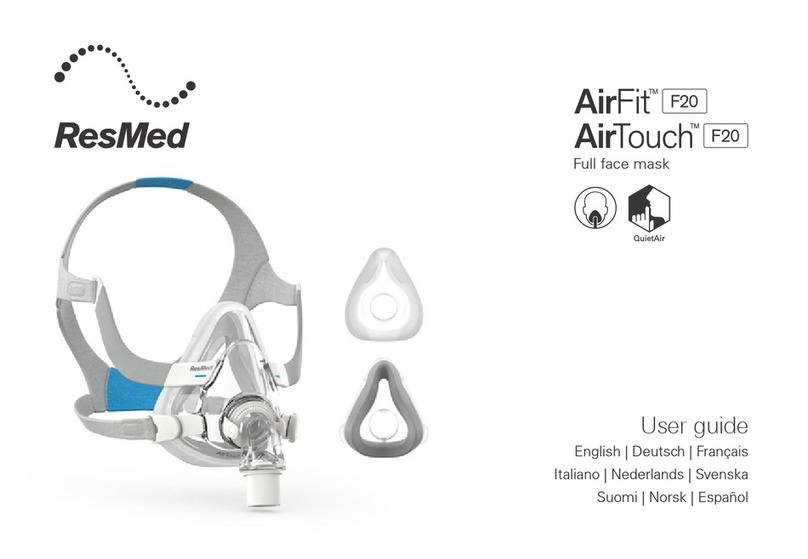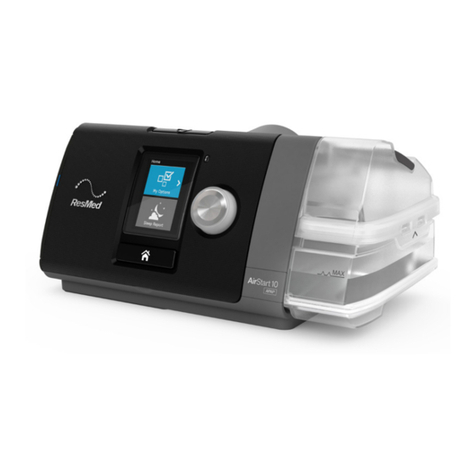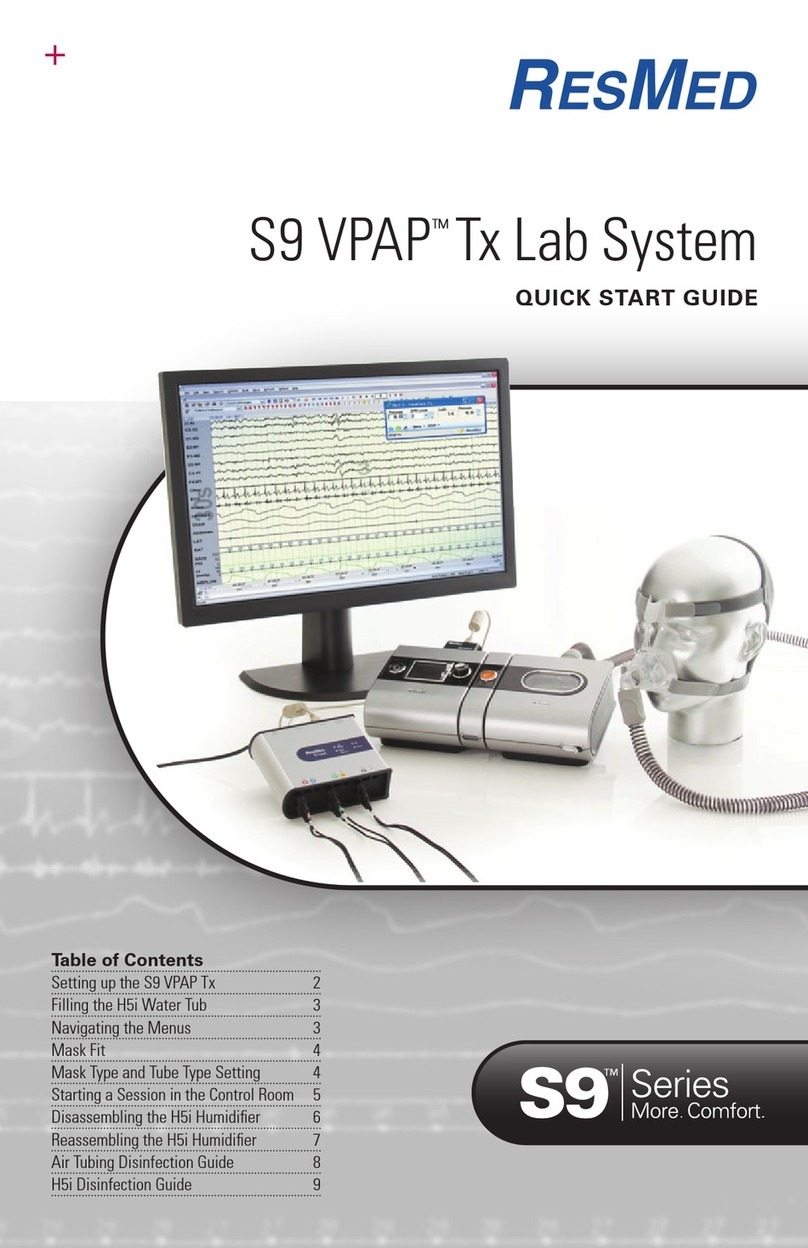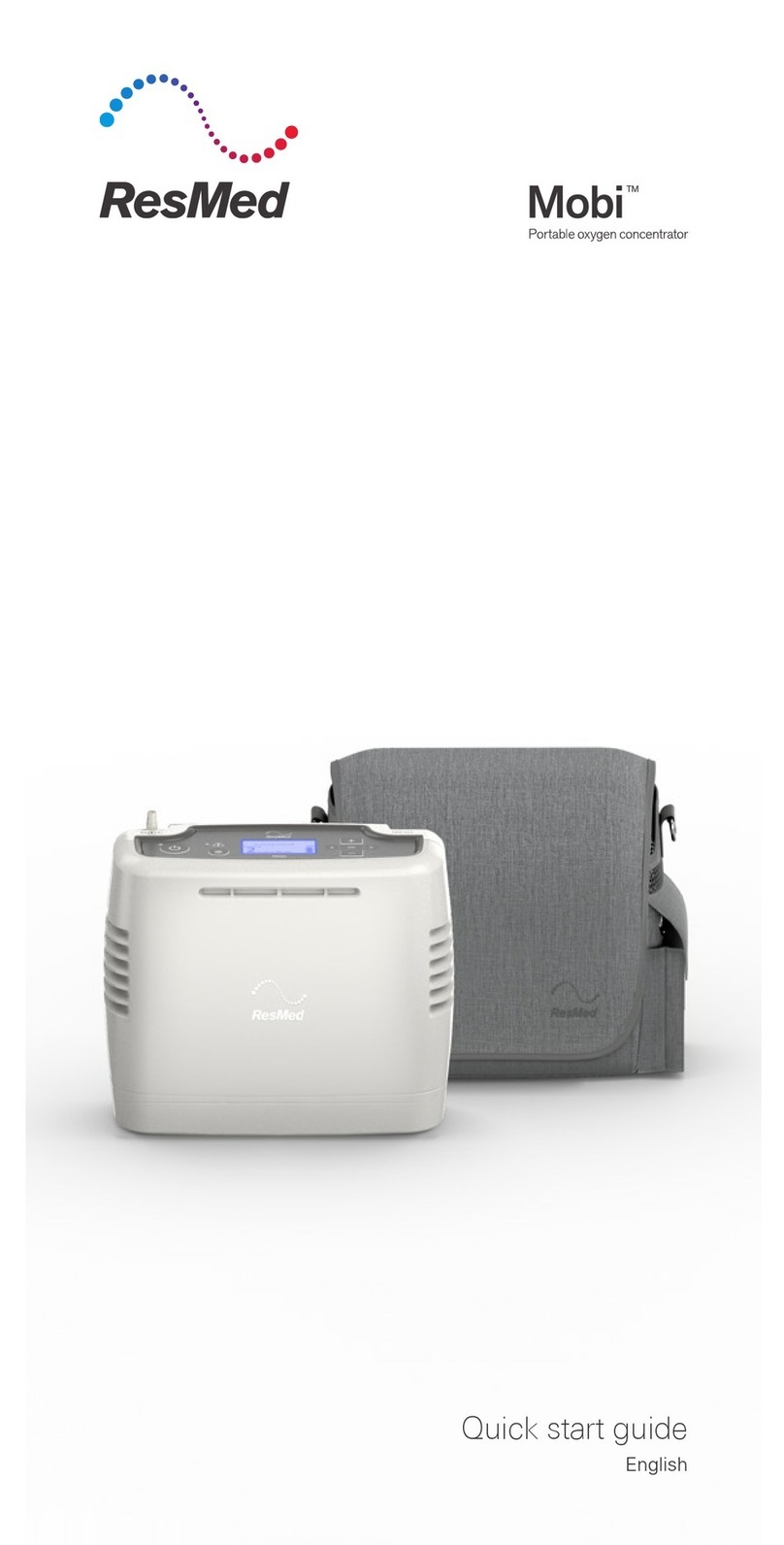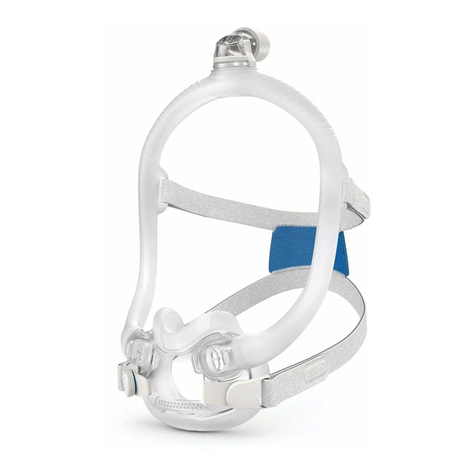● The subject can always use the Start/Stop button on the top of the aCPAP. As the
SmartStart feature will generally be enabled, the device will start automatically when the
subject breathes into the mask.
● Never turn the device on until the mask is on the subject’s face.
● It’s important that the device be comfortable when it is put on. If the pressure from the
device is too much or not enough when starting treatment, please call the Sleep SMART
Care Team.
● If pressure wakes the subject up, try setting the Expiratory Pressure Relief (EPR). By
default the EPR is set to 3.
3. Humidity
The flow of air from the aCPAP that goes across the nose, sinuses, mouth, throat, and upper
airway can cause dryness. This can happen especially if the mouth is often open while the
subject sleeps. The humidifier that comes with the aCPAP helps to reduce dryness. The user
controls how much humidity they receive. Here are some tips for setting the humidity for
maximal comfort:
● It is normal to have to adjust the humidity differently throughout the year.
● Without enough humidity, the body will cause the tissue in the nose and throat to
become inflamed. If the subject wakes with a stuffy nose that goes away 2-3 hours into
the day, they should try increasing their humidity.
● A typical mid-range starting setting for the humidity is 4, on a scale of 0 (off) to 8.
● Adjust the humidifier to their comfort. If they prefer a lower temperature and humidity,
they should set their humidity low.
● If subjects need more help with setting the humidifier for comfort, or they think that
dryness is occurring because they might be keeping their mouth open at night,
encourage them to call the Sleep SMART Care Team.
4. Replacement of Supplies
The Sleep SMART Care Team is the best source of information. It is always a good idea to
know when the supplies are due to be replaced or requested. Standard replacements will occur
according to the schedule just below. However, the experience is different for each person, and
sometimes parts need to be requested and replaced sooner. If not replaced periodically,
headgear may stretch out and the aCPAP mask interface/pillows will get soft and floppy. They
may begin to have leaks of pressure or humidity, which could lead to sub-optimal treatment,
appearance of snoring, or daytime symptoms.
Standard replacement of supplies: filters should be replaced every month, nasal pillows and
other mask interface seals every three (3) months. The mask, headgear, ClimateLine tubing,
and water chamber should be replaced every six (6) months. These can be replaced more often
10

